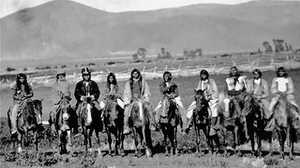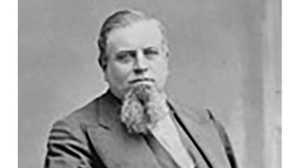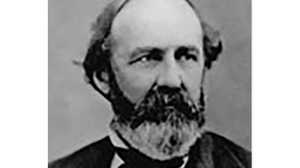The Impact of the Transcontinental Railroad

On May 10, 1869, as the last spike was driven in the Utah desert, the blows were heard across the country. Telegraph wires wrapped around spike and sledgehammer transmitted the impact instantaneously east and west. In San Francisco and New York, wires had been connected to cannons facing outward across the ocean. When the signal from the spike came through, the cannons fired. The world was put on notice: the transcontinental railroad was completed and America was moving to the forefront of the world's stage.
The World Grew Smaller
One day later, the first transcontinental freight train rumbled out of California on its way to the east coast. It carried in its hold an emissary of the Asian markets: a shipment of Japanese teas. On May 15, though the road required hundreds of thousands of dollars in patchwork along its length, regular passenger service opened for business. Travelers could make the trip between San Francisco and New York in a week. No longer did passengers or cargo have to take the treacherous route across ocean and Panama that had killed railroad advocate Theodore Judah. The coasts were connected -- and the world as Americans knew it had grown smaller.
A Competing Canal
Railroad pioneer Asa Whitney had once dreamed an iron route would re-center the world toward America, making it a conduit of exchange between Asia and Europe. In this sense, his vision of the grand project remained unfulfilled. Just six months after the meeting at Promontory Summit, workers half the world away consummated their own monumental feat of engineering. Opened in November, 1869, Egypt's Suez Canal linked Asia and India to Europe by a single waterway, thus ensuring that exchange between the two regions would continue to circumvent American soil.
Surging Interstate Trade
However, the transformation achieved in intracontinental trade was substantial. Within ten years of its completion, the railroad shipped $50 million worth of freight coast to coast every year. Just as it opened the markets of the west coast and Asia to the east, it brought products of eastern industry to the growing populace beyond the Mississippi. The railroad ensured a production boom, as industry mined the vast resources of the middle and western continent for use in production. The railroad was America's first technology corridor.
Improved Public Discourse
As it encouraged the growth of American business, so too did it promote evolution of the nation's public discourse and intellectual life. Americans could travel across the length of the continent in a matter of days, and gaze upon their country in its entirety from the windows of their train cars. Conversations begun in the east ended in the west. Books written in San Francisco found homes on New York shelves just one week after their publication. The rails carried more than goods; they provided a conduit for ideas, a pathway for discourse. With the completion of its great railroad, America gave birth to a transcontinental culture. And the route further engendered another profound change in the American mind. Here was manifest destiny wrought in iron; here were two coasts united; here was an interior open to settlement. Distances shrank, but identification to land and fellow American grew in inverse proportion.
A Disaster for Native Americans
Not everyone would benefit from that transformation. The transcontinental railroad was not the beginning of white settlers' battles with Native Americans. Nor was it the final nail in the coffin. But it was an irrevocable marker of encroaching white society, that unstoppable force which would force Indians onto reservations within decades. By 1890, even the Powder River Valley — the rich hunting ground so hard won by red Cloud and the Oglala Sioux — would be lost. New treaties scattered the Indians to reservations and opened the last great Native American holding to the settlers so steadily branching outward from the iron road. And the buffalo herds upon which Indians depended had been nearly depleted. They were easy prey to sport-hunters brought to the plains by the carload. More disastrously, the railroad introduced the herds to American industrial production, for which they became one more resource to be mined en masse. Millions of buffalo fell to indiscriminate slaughter, their hides shipped back along the rails to the markets of the East.
A Web of Rails
The transcontinental railroad did not long remain the sole venue of travel through America's center. Lines spiderwebbed outward from its branch points, conveying north and south the settlers coming west to consume millions of acres of land. By 1900 a number of routes ran parallel — the Northern Pacific and Southern Pacific among them — reaching westward from Mississippi to the Pacific just like the pioneering road.







